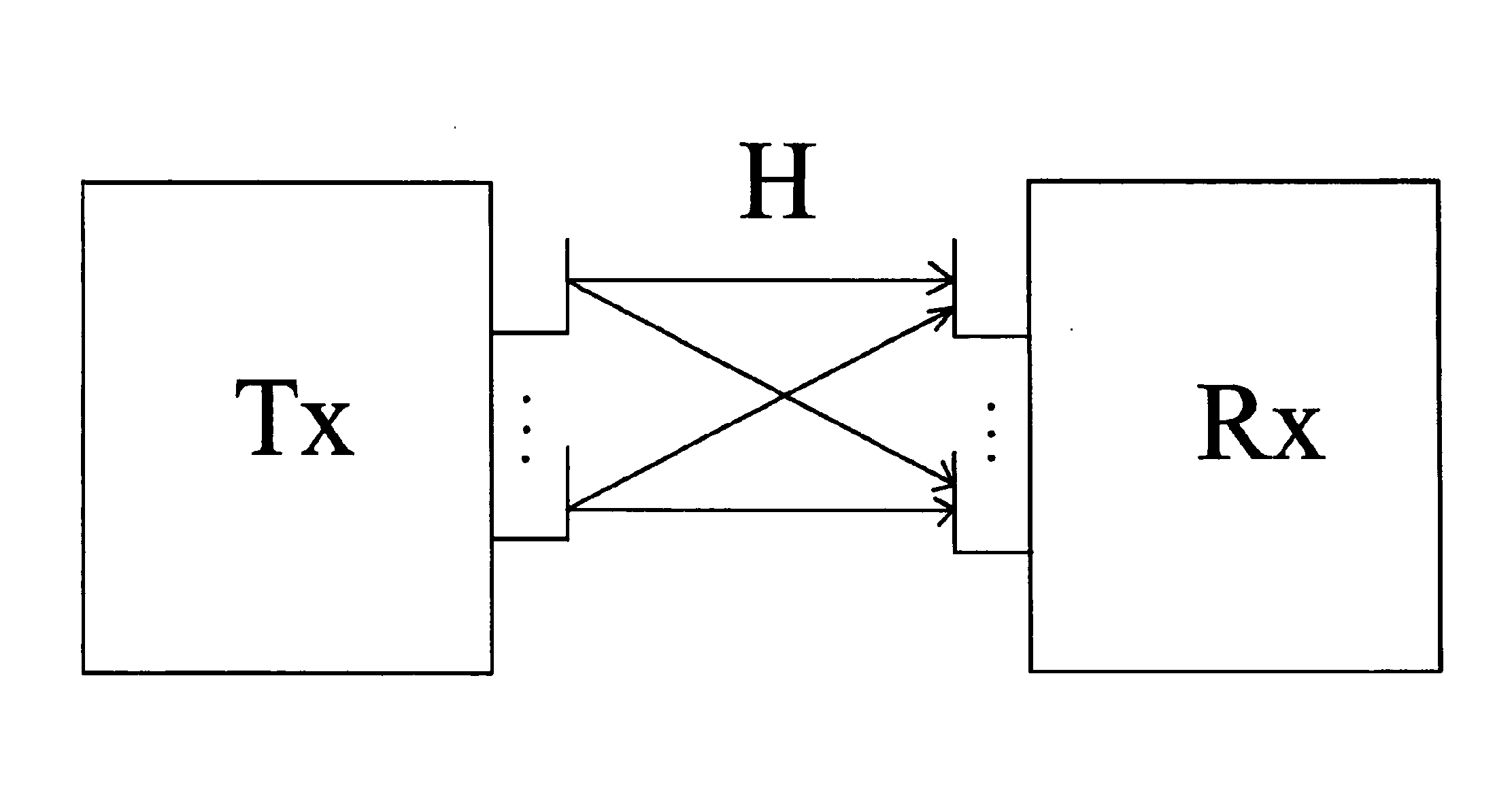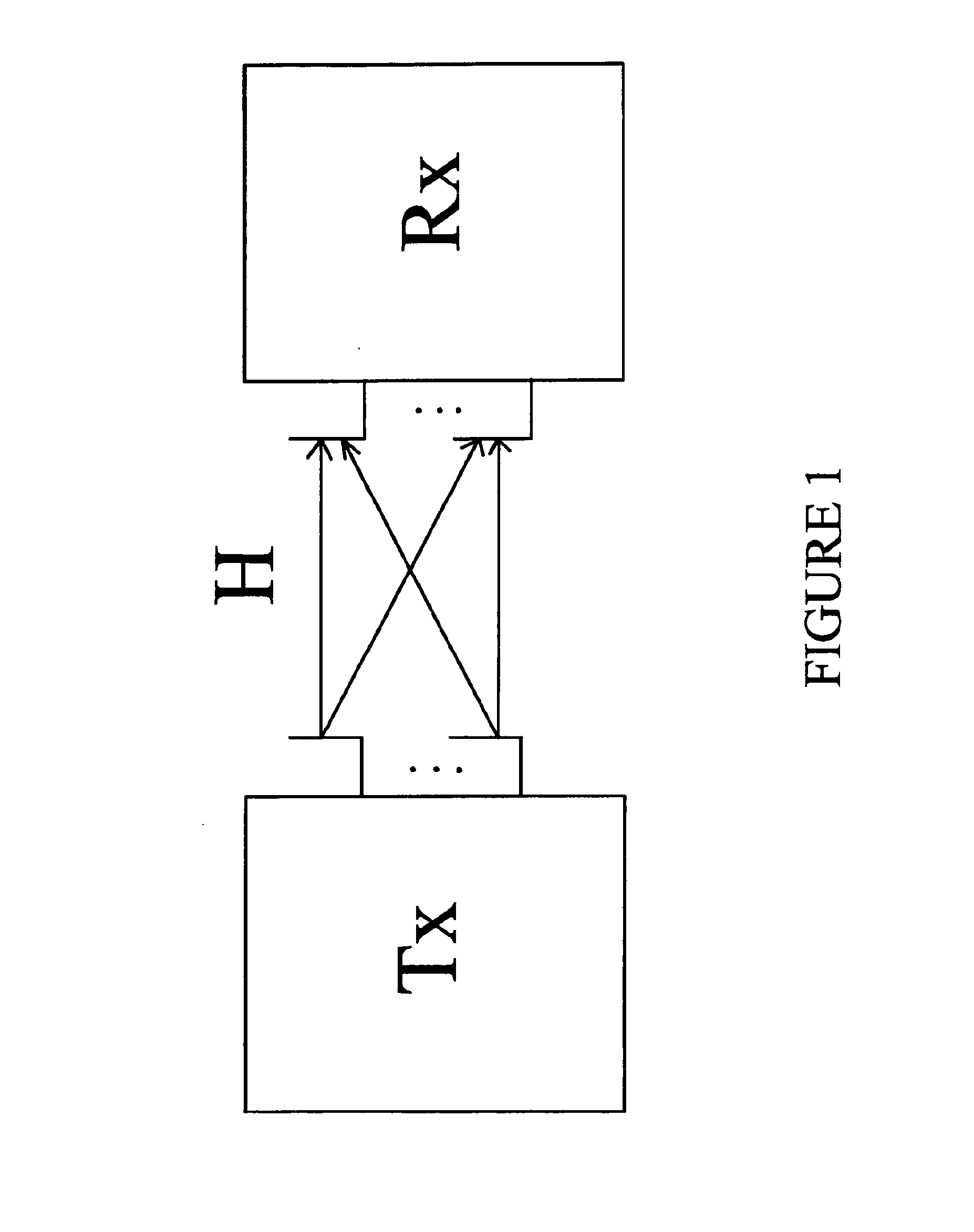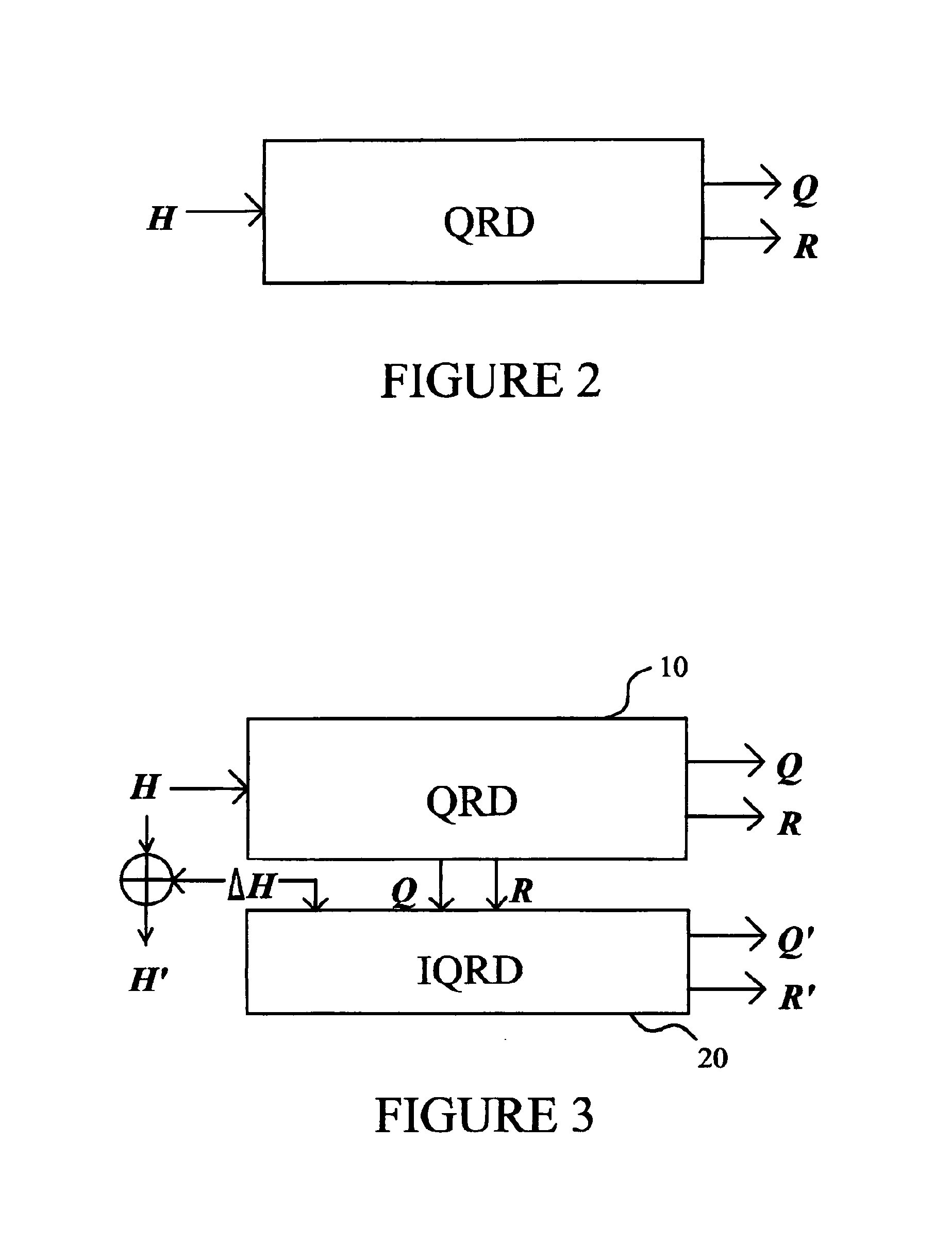Process for Performing a QR Decomposition of a Channel Matrix in a MIMO Wireless Communication System, and Receiver for Doing the Same
- Summary
- Abstract
- Description
- Claims
- Application Information
AI Technical Summary
Benefits of technology
Problems solved by technology
Method used
Image
Examples
Embodiment Construction
[0053]There will now be described one embodiment of the invention which achieves a very general process for performing a QRD of a channel matrix which is based on an iterative process and thus only requires one full QRD at the initialization of the process.
[0054]Furthermore, the process can be used in any configuration where a signal s needs to be detected from the knowledge of observations r in the formula below:
r=Hs+n (1)
[0055]The generality of the problem to be solved results in the fact that the process of the invention can be executed in any OFDM standard supporting MIMO spatial-multiplexing mode, e.g. IEEE 802.16, IEEE 802.11, 3GPP Long Term Evolution (LTE) and is particularly advantageous in the case of a large number of antennas and consequently in the case of the 3GPP LTE-Advanced (LTE-A) standard. The above mentioned process can also be performed in a Time Division Multiple Access (TDMA), a Frequency Division Multiple Access (FDMA) or a Code Division Multiple Access (CDMA...
PUM
 Login to view more
Login to view more Abstract
Description
Claims
Application Information
 Login to view more
Login to view more - R&D Engineer
- R&D Manager
- IP Professional
- Industry Leading Data Capabilities
- Powerful AI technology
- Patent DNA Extraction
Browse by: Latest US Patents, China's latest patents, Technical Efficacy Thesaurus, Application Domain, Technology Topic.
© 2024 PatSnap. All rights reserved.Legal|Privacy policy|Modern Slavery Act Transparency Statement|Sitemap



